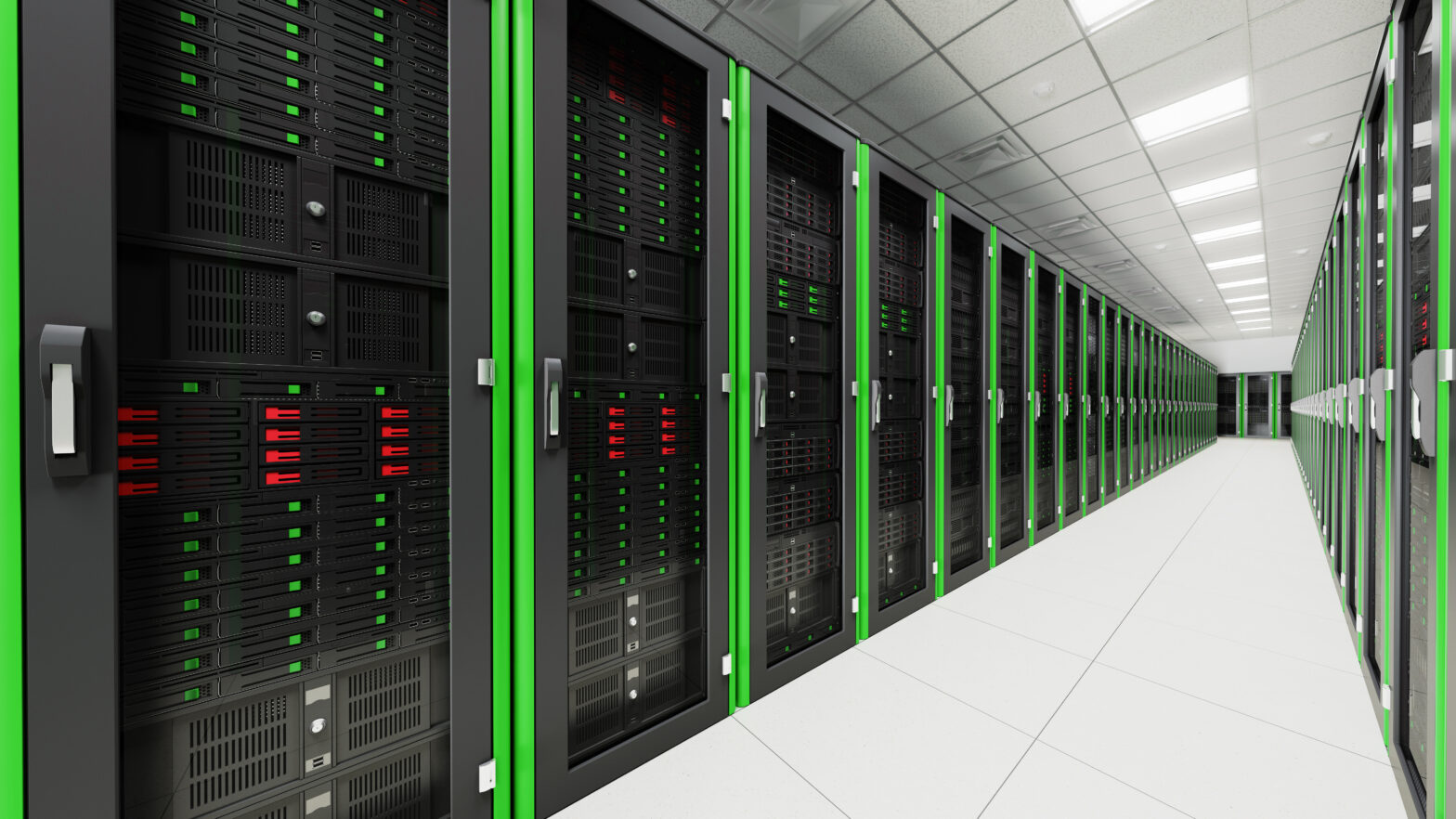Data centres use a tonne of energy. Whether they’re found in an office’s tiny closet or a data farm comprising hundreds of thousands of square feet, the real cables, servers and software that create the virtual world are powered by electricity. Lots and lots of electricity.
Every time someone watches the latest cute video of a cat dressed as a shark riding a Roomba, servers in some remote data centre slurp energy to serve up the content. Each event doesn’t use much, but all the data flowing around the world 24 hours a day quickly adds up to gargantuan numbers.
Much of that power comes from burning dirty fossil fuels, which accelerate climate change and impact human health.
>See also: The small data centres’ renewable journey
In 2014, U.S. data centres alone consumed 70 billion kilowatt-hours of electricity — almost 2% of the country’s total consumption, according to the Department of Energy.
You would need to burn 36.4 million tons of coal to generate that much power. While many large data centres procure renewable energy, thousands of small and dispersed data centres get their energy from their local utility. And since two-thirds of the country’s electricity comes from fossil fuels, that much energy isn’t just a major hit to companies’ bottom lines, it’s also a significant problem for the atmosphere, which must absorb the greenhouse gases that power production emits.
The picture is the same around the world. Data centre electricity consumption has been rising for years. They now consume around 3% of the world’s electricity supply and emit 2% of all greenhouse gases.
One analysis projects that data centres will consume almost 541 terawatts of electricity in 2017 to power air conditioning systems and data processing and storage.
That’s an increase of more than 190% since 2012. The sector’s energy use is expected to continue increasing through at least 2020.
But many data centre operators are no longer sitting idly by as they watch their power bills rise while seeing the gross inefficiencies of their operations.
>See also: How to improve data centre energy sustainability?
They are being driven to work out how to cut power use and generate their own from sometimes cheaper alternative energy sources. Besides lowering costs, success also means environmental bragging rights that employees, shareholders and the public love.
Taken together, these two benefits create a strong business case to make digital operations more efficient.
Putting facilities on an electron diet
Smart energy management stands at the centre of the solution to improving always-on data systems.
In just one measure of how much room there is for improvement, a study from IT research group Info-Tech noted that just 36% of a typical centre’s power consumption is used for network hardware and server processing and storage.
The rest — 64% — is expended to cool the servers, power lighting and in power supply conversion loss. Advances in key technologies and processes are now creating opportunities to cut down on what has been a painful fixed cost.
In fact, installing energy efficient systems can lower a centre’s energy use by up to 40%, said Lawrence Berkeley National Laboratory researchers.
Work like consolidating servers and virtualisation, which moves the functions of many different physical servers onto one box, saves on cooling and operating costs along with space.
Designing server rooms to optimise airflow pathways, expanding air conditioning temperature set points and integrating outside air economisers all help drive down ancillary costs.
>See also: Interconnection Oriented Architecture: the changing role of the data centres
Other technologies that can be connected to universal power supplies can yield 15% energy savings annually.
And that’s just the tip of the iceberg in finding energy and cost savings. Powerful new ideas keep emerging. Google, for instance, is now using machine learning AI to reduce the energy used for cooling its data centres by 40%.
Yahoo has built a centre modelled after a chicken coop that uses innovative design to more effectively ventilate server racks. And by aggressively virtualising servers and using cold outside air, Comcast has cut significant power consumption at its facilities.
These upgrades can save companies millions of kilowatt-hours in electricity and keep thousands of metric tons of carbon dioxide from entering the atmosphere.
New cheaper, cleaner and more reliable technologies, along with streamlined data centre operations, are pointing to a new reality.
Finding better ways to store and serve the world’s data is no longer a distant dream by a few environmentally and cost-conscious idealists; it’s now a business imperative. The future of data is green.
Sourced by Nancy Buzby, AVP of strategic marketing at Environmental Defense Fund, working with leading global brands to improve corporate sustainability leadership and embed cutting edge energy management through the innovative Climate Corps program










